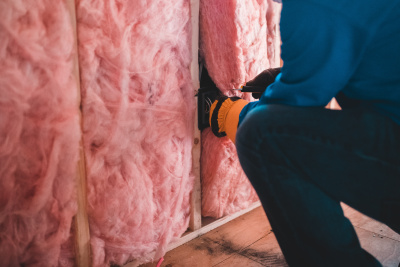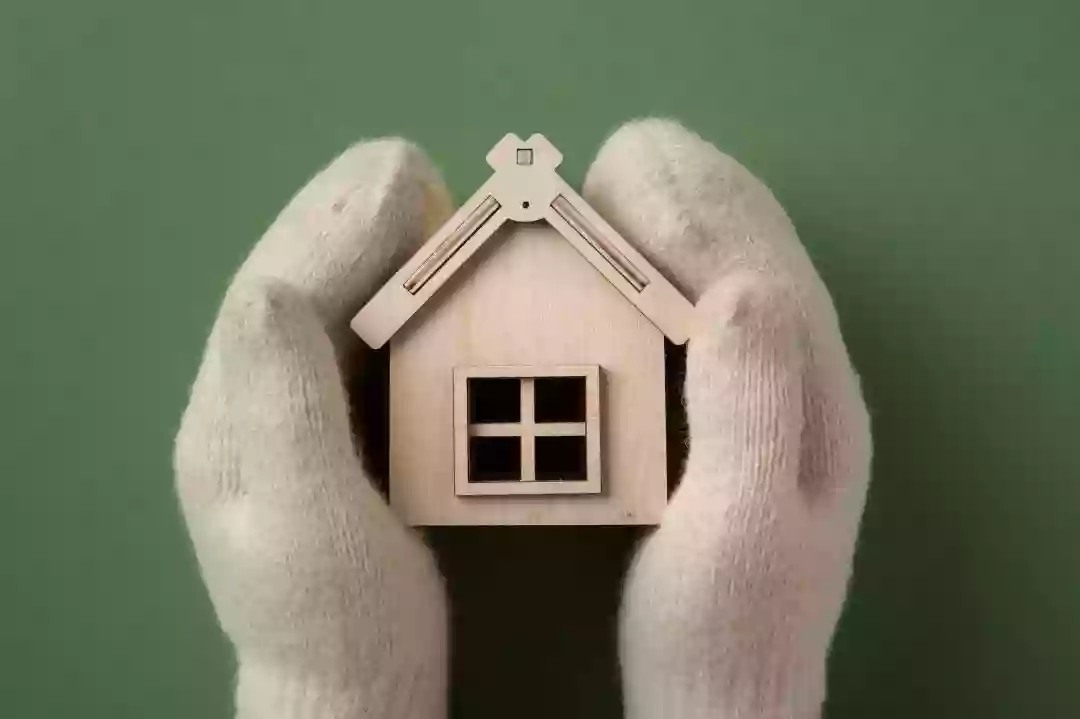Thickness And R-Value
Your home's R-value and heat flow resistance will improve as you add more insulation. The R-value will typically rise proportionately with increased insulating thickness. However, for loose-fill insulation, as the installed thickness rises, the product's settled density rises as a result of the insulation's compression under its own weight. This compression prevents the R-value of loose-fill insulation from changing proportionally with thickness.
The efficiency with which an insulating material inhibits heat flow is determined by installation technique and location. Compacted insulation, for example, will not deliver its full-rated R-value. Because of a phenomenon known as thermal bridging, which allows heat to flow more easily through studs, joists, and other construction materials, the overall R-value of a wall or ceiling will differ slightly from the R-value of the insulation itself. Furthermore, by insulating building cavities, energy is saved and airflow or leakage is reduced.
Can You Have Too Much Insulation?
There are no safety issues associated with installing too much insulation in your loft. Heat can be kept from escaping with the use of insulation. To reduce excessive heat, simply open a window and lower the heater. Few people would argue that reducing the heat to save money on bills is a good idea. However, a roof that isn't ventilated can be a bigger problem. If moisture cannot naturally escape your property, it will condense on interior features and fixtures, which will eventually result in mould and mildew.
Moisture must evaporate, and excessive insulation may obstruct this process. While 'too much' insulation normally isn't a problem, it can be a drawback if your insulation material is obstructing any vents. In order to avoid the buildup of humidity in your loft, it is crucial to enable fresh air ventilation. Loft vents enable the natural exhaustion of warm air and its replacement by cooler air from the outside. Occasionally, proper care is not taken to guarantee that these vents are kept clear to allow air to circulate. Condensation from this may result, which may then cause wood rot, mildew, and other moisture-related issues.
Although some older homes may require ventilation installation, the majority of modern homes should already have such loft ventilation. To avoid spending more money than is necessary, one of the reasons to avoid having "too much" insulation in your loft is to do so. The cost-effectiveness of additional insulation will decrease as you add more until it is completely ineffective. Simply said, spending money on additional insulation when it is not necessary defeats the purpose of having insulation, which is largely to save you money.

Need assistance finding loft insulation near you?
Get a QuoteRecommended Insulation Thickness For Pitched Roofs
It's advised to use the "warm roof" technique to insulate a pitched roof. In order to keep the roof timbers warm, insulation is put in two layers, one between the rafters. You could install 170mm of insulation and an additional 100mm of board insulation between the rafters to get the requisite 270mm of insulation. Keep in mind that there should always be a 25mm air gap between your insulation and the underside of your roof tiles.
By adding insulation on top of the roof framework, a warm flat roof is created. The phrase "Warm Roof" originated because of the warmth that the insulation on top of the roof causes in the wood structure below; refurbishment is the removal and replacement of 50% or more of the waterproofing layer on the roof. If a renovated roof doesn't satisfy a minimum thermal performance, Part L of the Building Regulations mandates that its thermal efficiency be brought up to date. Roof insulation must be upgraded if it doesn't meet the minimum requirements. This does not apply, though, if you are replacing your flat roof with a fresh waterproof covering as part of a repair.
Recommended Insulation Thickness For Flat Roofs
The U-Value of an uninsulated flat roof is approximately 1.5 W/m2K. One should aim for a figure of 0.25 W/m2K or less while insulating one. You should use insulation boards with a combined thickness of about 150 mm to insulate your flat roof in order to achieve this. This is accomplished by placing a layer of around 100 mm of insulation over the deck and another 50 mm of insulation between the roof joists, just beneath the deck. This is how a flat roof may be made warm and well-insulated.
How to increase The Thickness Of Your Loft Insulation
The good news is that adding more insulation is relatively affordable, even if you belong to a group of people with very little loft insulation. Loft insulation typically costs around £20 per roll if you visit a nearby DIY store. Even still, it comes out to roughly £6 per m2 to insulate a virgin loft (one with no existing loft insulation). Obviously, the cost will increase if you don't already have any loft insulation in place.
You may purchase rolls of loft insulation in many different, seemingly arbitrary thicknesses, including 100mm, 120mm, 150mm, and 170mm. This is because the insulation producers are working to make it simpler to get the ideal 270mm thickness. The simplest method for insulating a brand-new loft is to roll insulation 100 mm thick between the joists. After this layer has been installed, install 170 mm of insulation at a 90-degree angle across the top of the joists.
Always begin as far from the loft hatch as you can and work your way back towards it while insulating the loft. Once the top layer of insulation has been installed, the joists shouldn't be visible because there shouldn't be any gaps between the layers. You want to cover the entire loft with a uniform "blanket" of insulation.
In this article:
